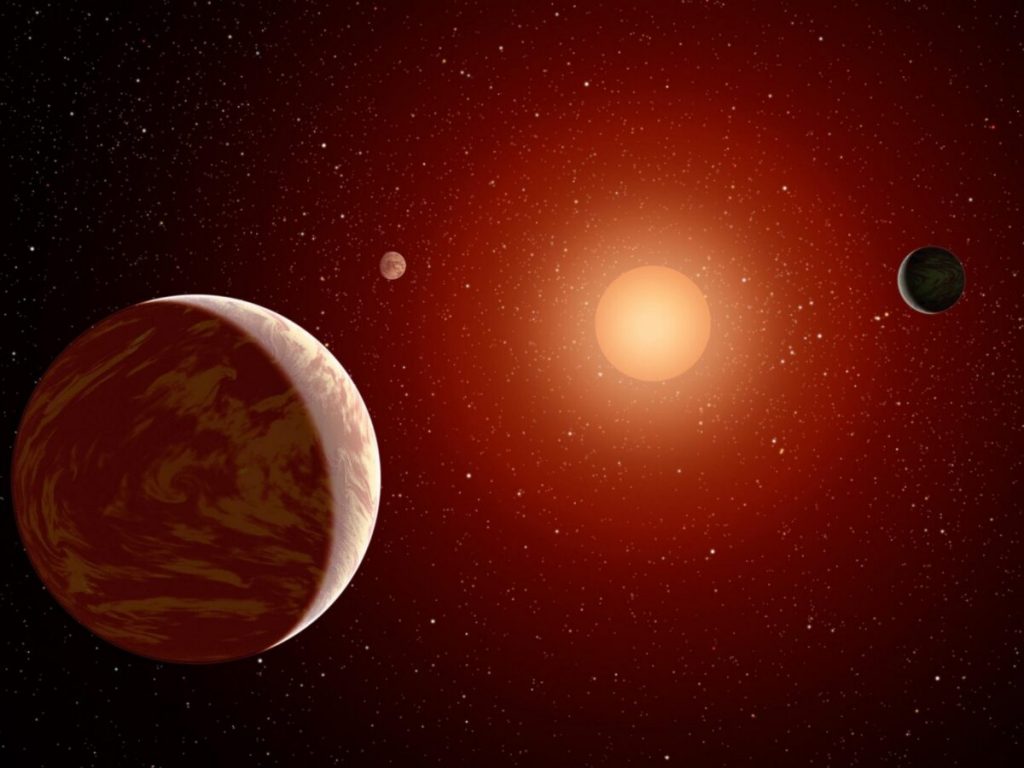Planets orbiting a small star 35 light-years from Earth in our solar neighborhood would have a dry, oxygen-dominated atmosphere. Webb and Hubble telescopes will be able to confirm whether they meet the conditions for life.
When the world’s most powerful telescope is launched into space this year, scientists will find out whether Earth-sized planets in our “solar neighborhood” have a prerequisite for life: an atmosphere.
These planets orbit an M dwarf, which is the smallest and most common type of star in the galaxy. Currently, scientists do not know how many Earth-like planets orbiting this type of star have the properties necessary to be habitable.
To clarify this question, astronomers from the Universities of California Riverside, Johns Hopkins, Cornell and Chicago, along with scientists from Johns Hopkins University and NASA’s Goddard Space Flight Center, studied whether the soon-to-be-launched James Webb Space Telescope, or the Hubble Space Telescope , which is currently in orbit, is capable of detecting the atmospheres on these planets, according to reports release.
They also modeled what types of atmosphere were likely to exist, if they existed, and how they might be distinguished from one another. The results of this research were published in the Astronomical Journal.
RELATED TOPIC: The Closest Habitable Exoplanet To Earth Is Real
35 light years from Earth
This study focused on the M dwarf star L 98-59, which measures only 8% of the mass of our Sun. Despite its small size, it is only 35 light-years from Earth. Its brightness and relative proximity make it an ideal target for observation.
Soon after M dwarfs form, they go through a phase where they can glow two orders of magnitude brighter than normal. Strong ultraviolet rays during this phase have the ability to dry out the planets orbiting around you, evaporate surface water, and destroy many of the gases in the atmosphere.
The researchers modeled four different atmospheric scenarios: one in which the L 98-59 worlds were dominated by water, another in which the atmosphere consisted primarily of hydrogen, and the other with a carbon dioxide atmosphere similar to Venus. Which leaked hydrogen from the atmosphere into space, leaving behind only oxygen and ozone.
Additional information
They found that the two telescopes can provide complementary information using transit observations, which measure a drop in light that occurs when a planet passes in front of its star.
Planets revolving around L 98-59 are closer to their star than Earth is to the Sun. They complete their orbits in less than a week, making transit observations by telescope faster and more cost-effective than observing other systems where planets are far from their stars.
In this system, Found A planet half the mass of Venus – the lightest exoplanet ever measured using the radial velocity technique – is an ocean world and a potential planet in the habitable zone that could host life, according to research published last June.
Dry air and oxygen
Of the four atmospheric scenarios the researchers considered, they concluded that a dry, oxygen-dominated atmosphere is the most likely to occur for these planets.
Although they may not have atmospheres suitable for life today, these planets could provide important insight into what might happen to Earth under different conditions, and even what might be possible on Earth-like worlds in other parts of the galaxy.
He said that the L 98-59 system was only discovered in 2019, and thanks to this research new information was obtained about its properties, which will be improved, when the Webb telescope is launched later this year.
“We are on the verge of revealing the secrets of a star system that was hidden until very recently,” the researchers say.
New astronomical frontiers
The James Webb Space Telescope is a collaborative space observatory for nearly 17 countries that is jointly built and operated by NASA, the European Space Agency and the Canadian Space Agency, to replace the Hubble and Spitzer telescopes.
JWST will provide unprecedented accuracy and sensitivity, and will enable a wide range of research in the fields of astronomy and cosmology.
One of its main goals is to observe some events and distant objects in the universe, such as the formation of the first galaxies. These types of targets are beyond the scope of current terrestrial and space-based tools.
Its objectives also include studying the formation of stars and planets and obtaining direct images of them outer planets And Novas. New research on the L98-59 system paves the way for these expected discoveries.
reference
L 98-59: Minor planet reference system for future atmospheric characterization. Daria Pedroditska et al. Astronomical Journal, Volume 162, Issue 4. DOI.https://doi.org/10.3847/1538-3881/ac1171
Top image: An artist’s drawing of a dwarf star M, with three exoplanets orbiting around it. About 75% of the stars in the sky are smaller and cooler red dwarfs. (Container)

“Beeraholic. Friend of animals everywhere. Evil web scholar. Zombie maven.”

:quality(85)/cloudfront-us-east-1.images.arcpublishing.com/infobae/R5BNJX7RHGU5FSPXQJHMRLXVKE.jpg)





More Stories
“Without health there is nothing”
This will be the Europa Clipper probe
Why can tongue color indicate health problems according to science?